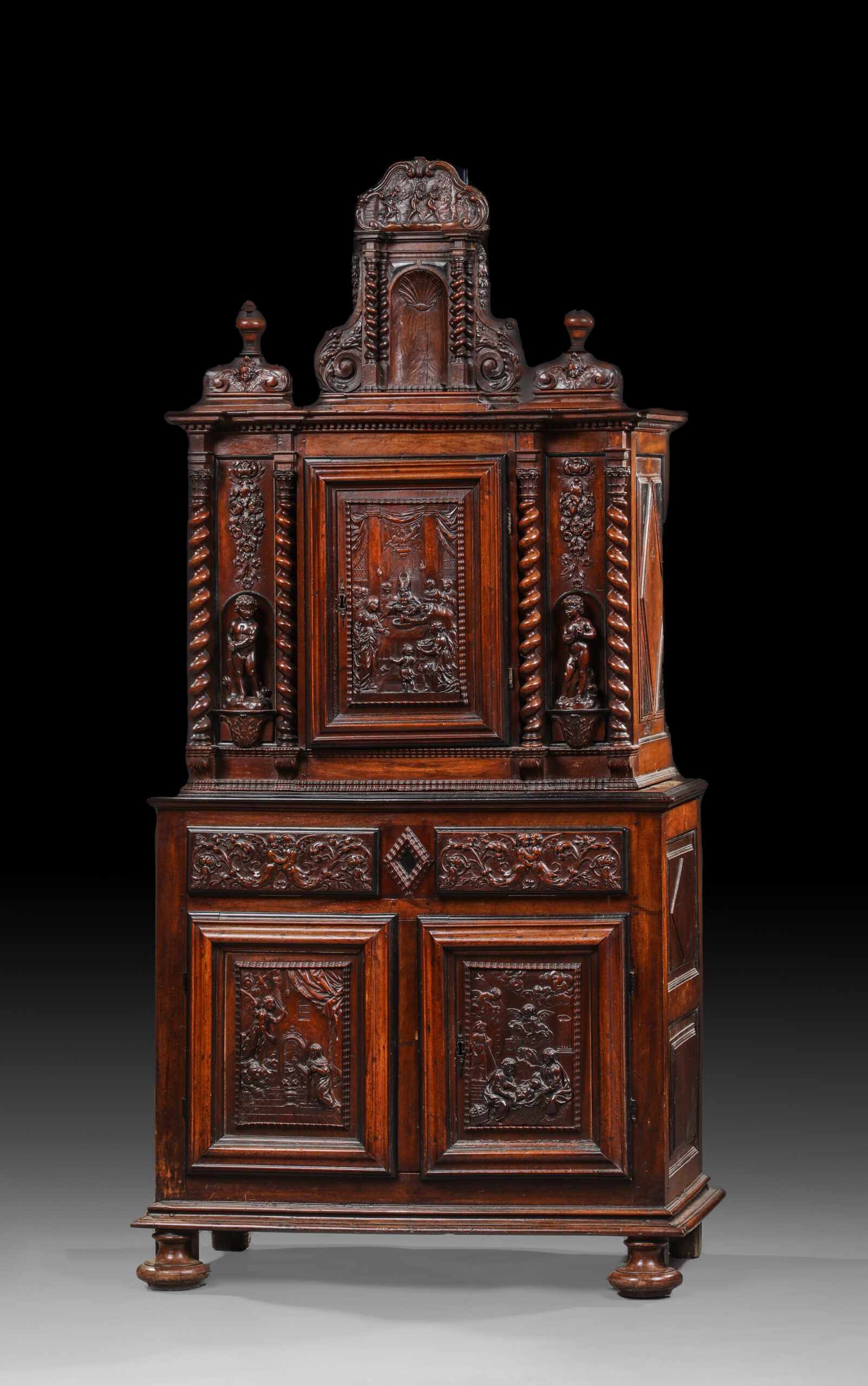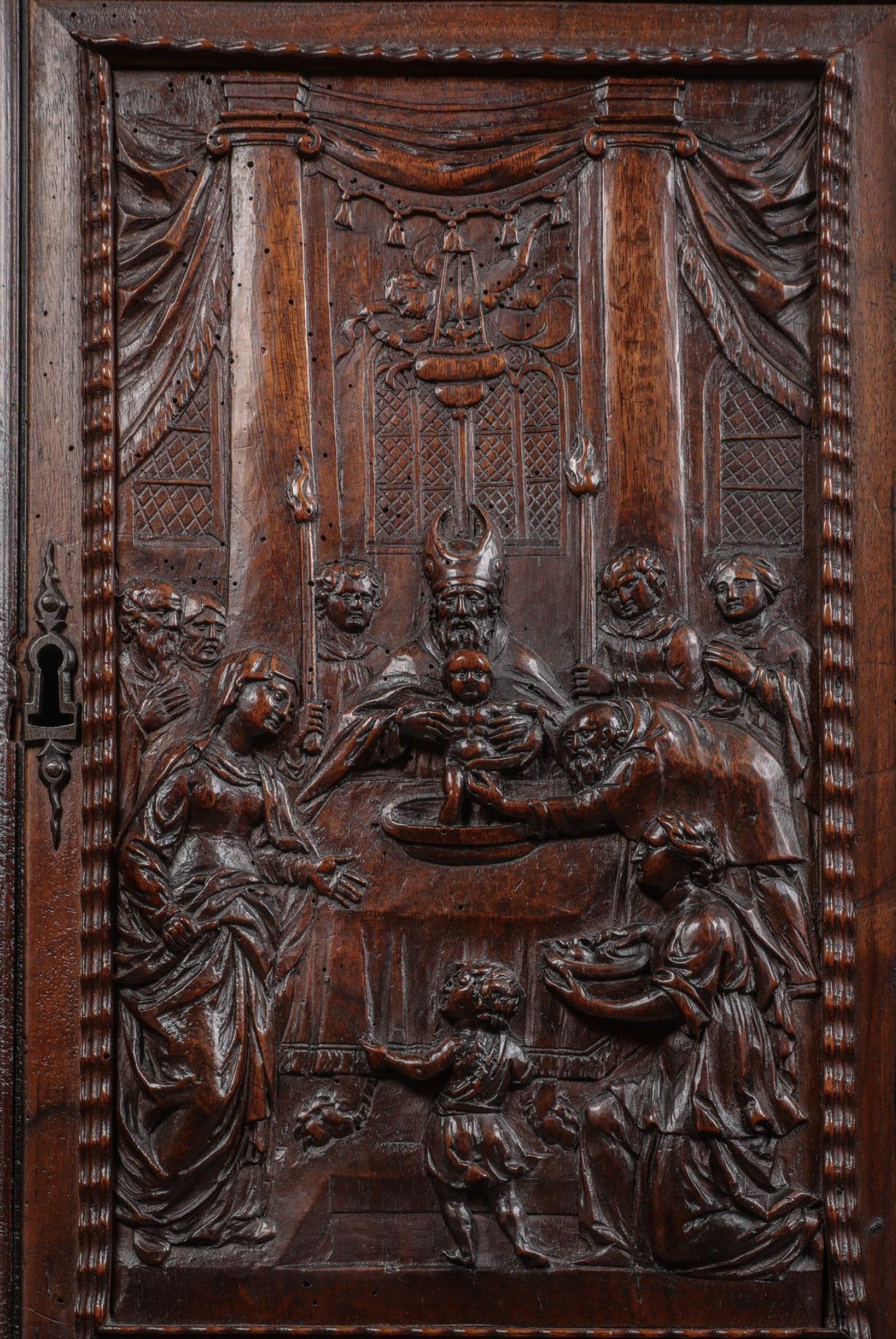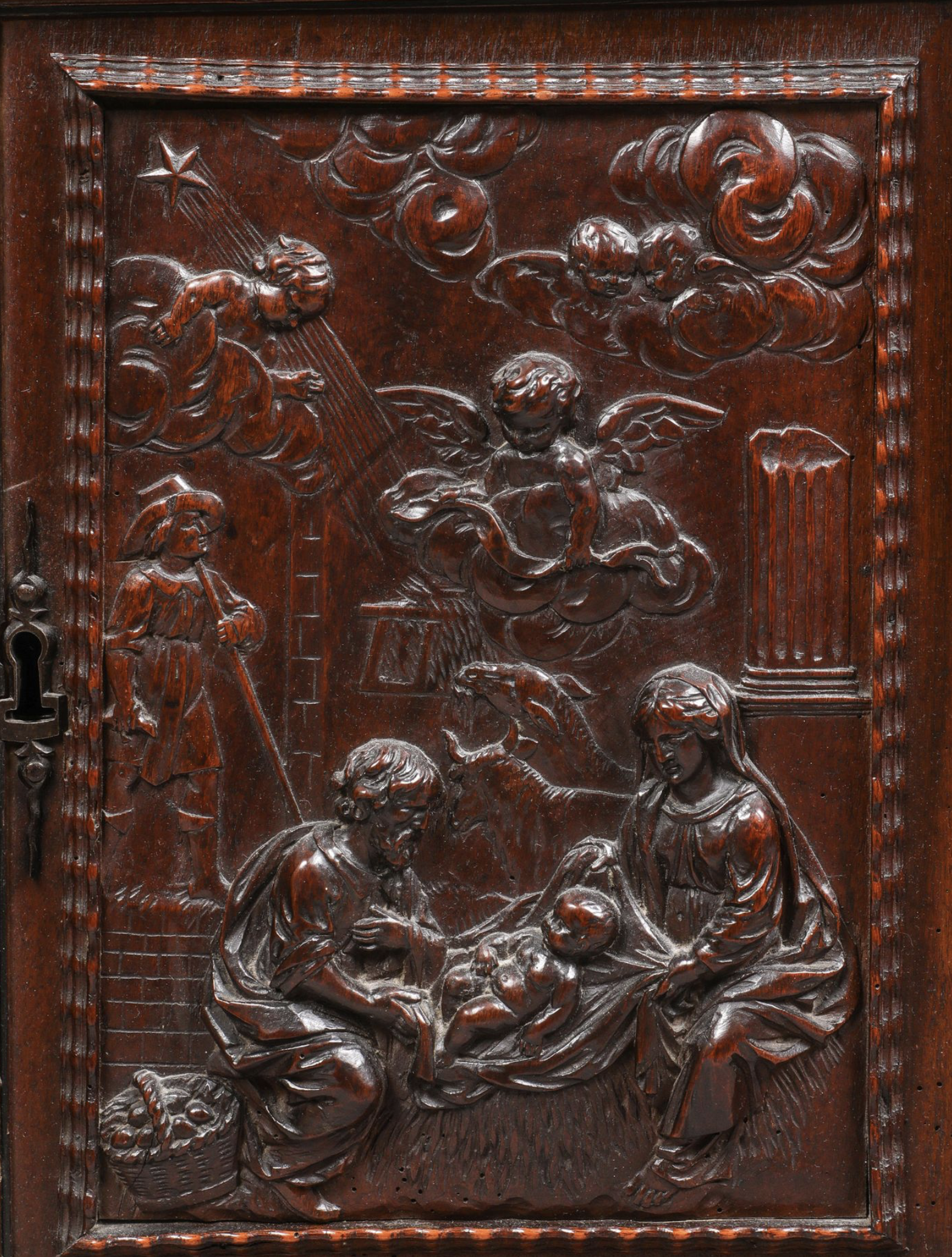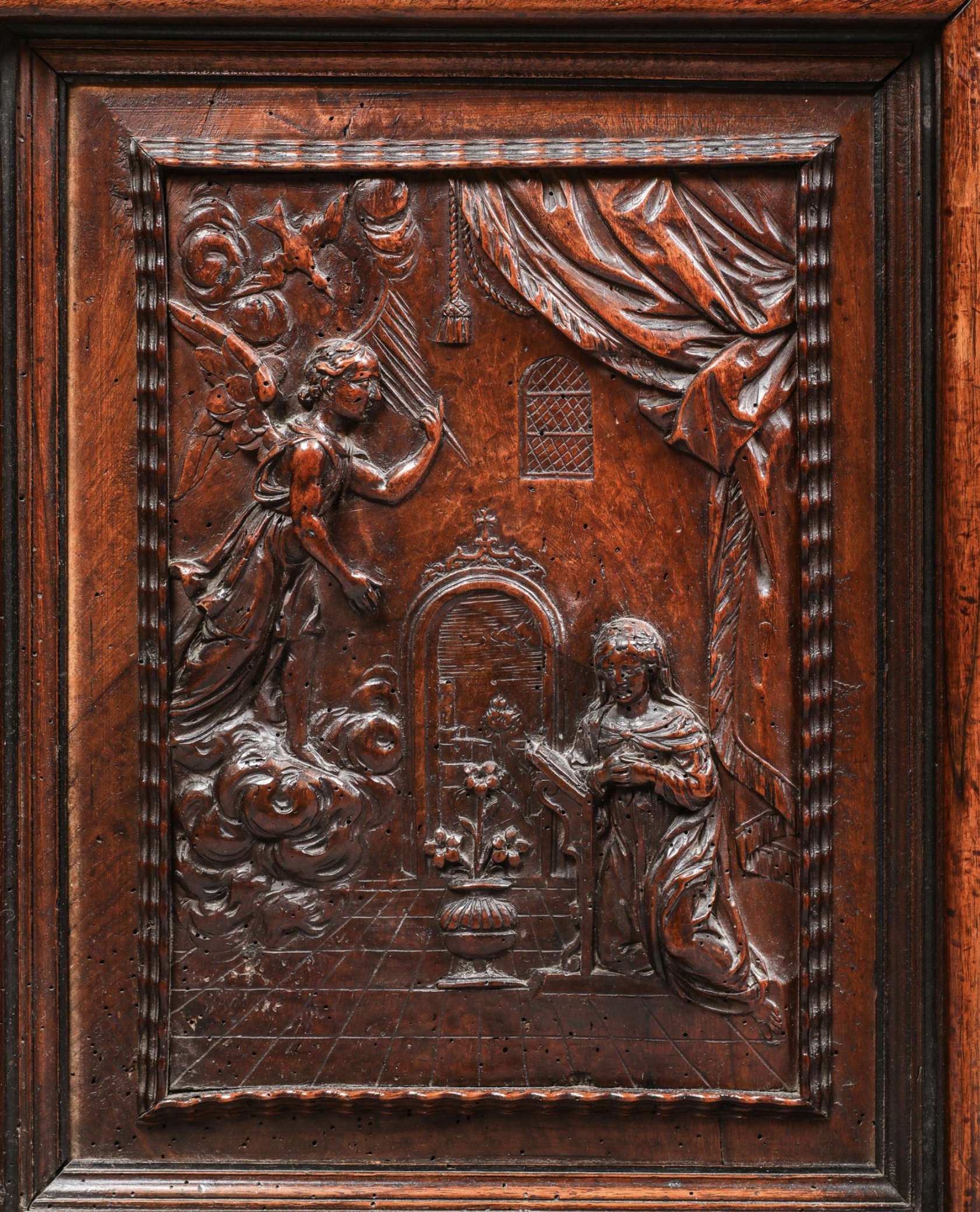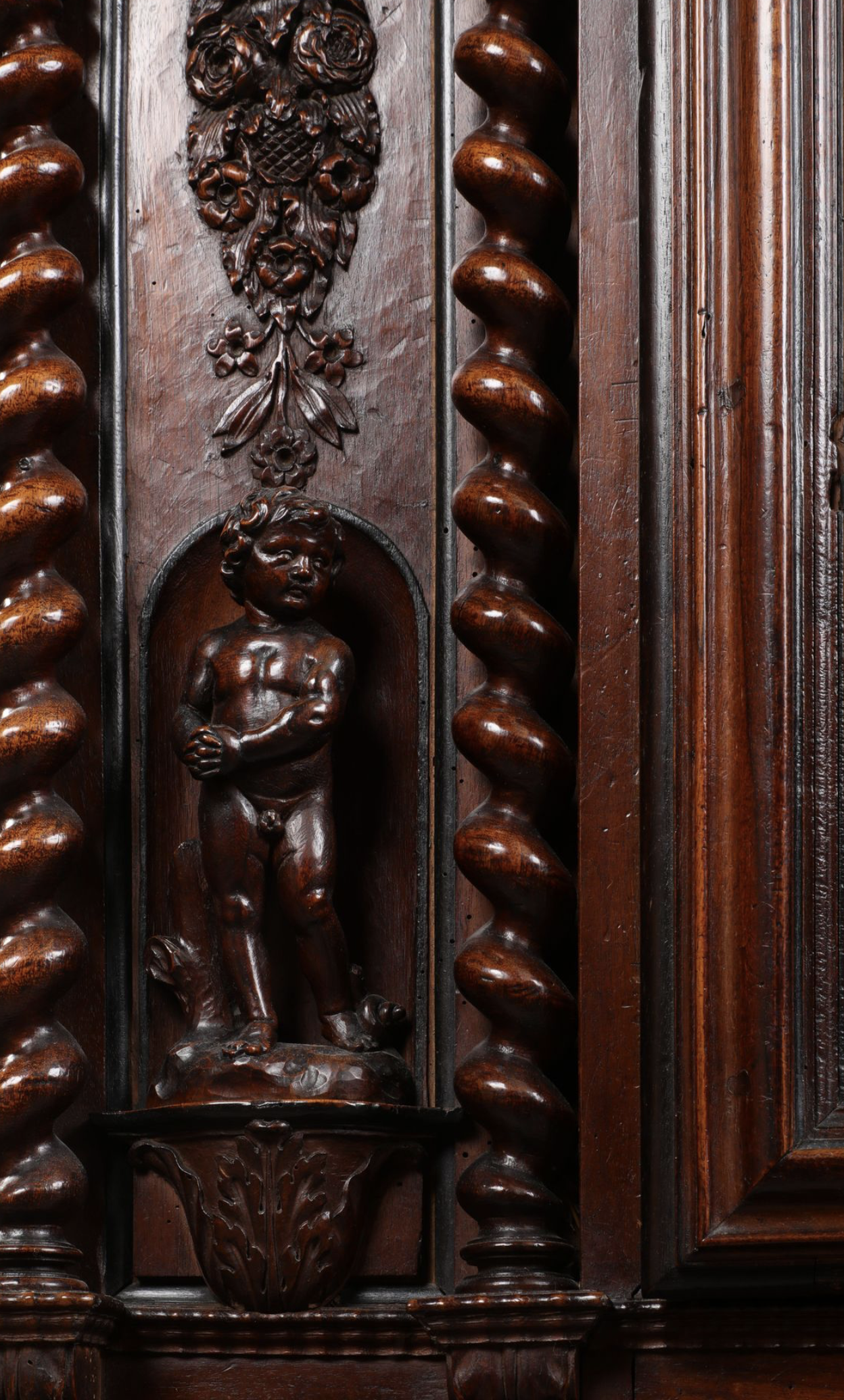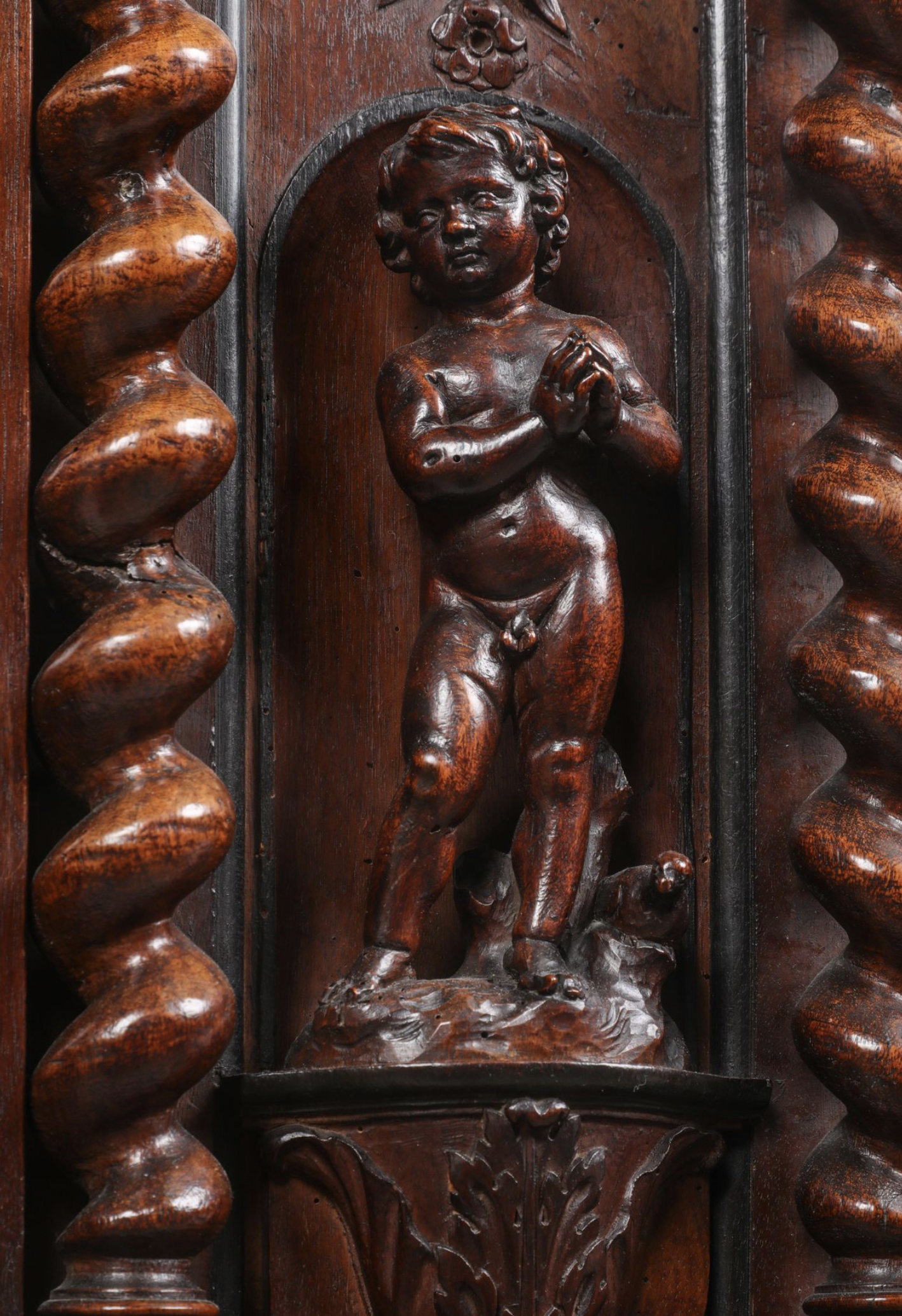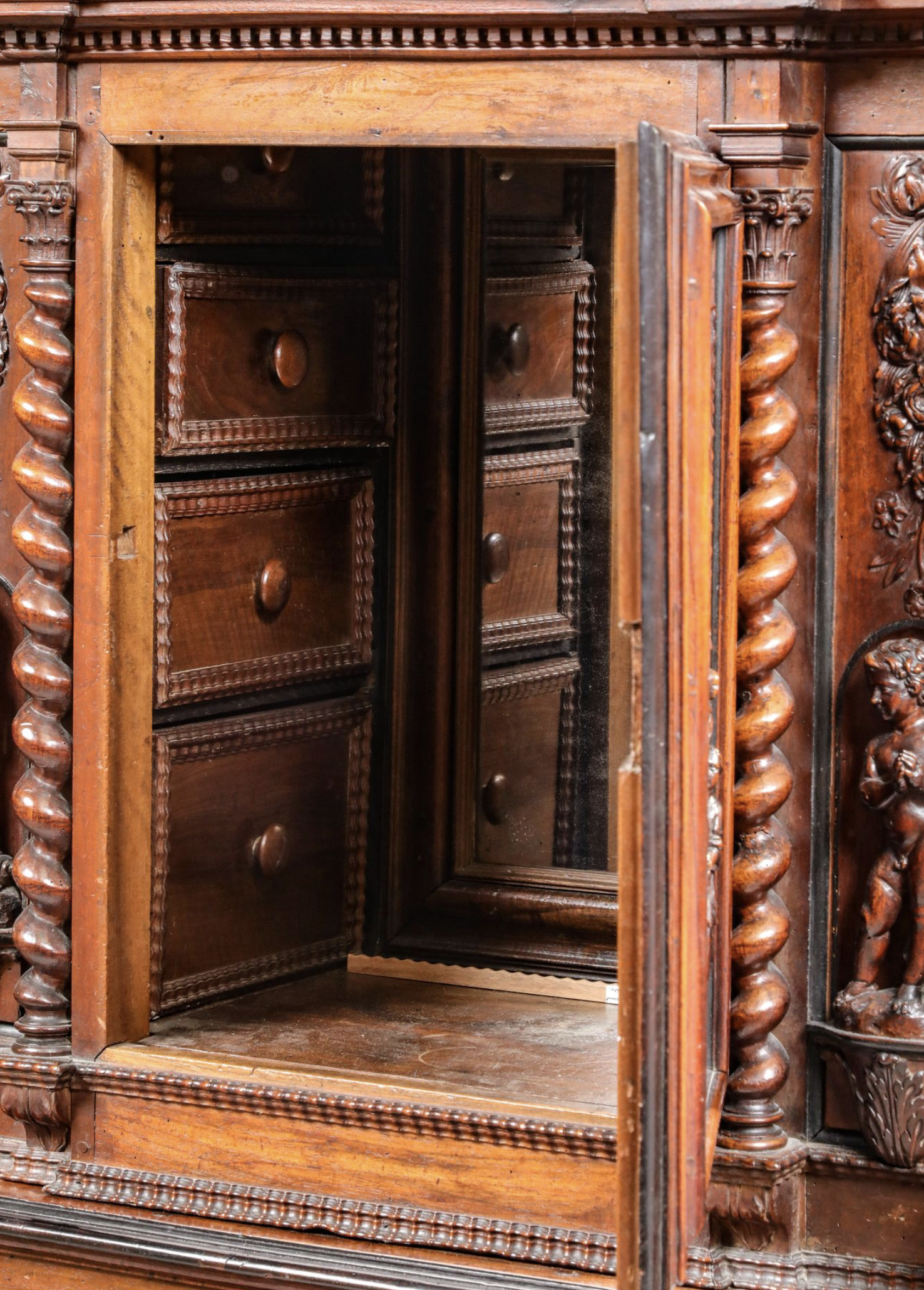Description
RARE CABINET SCULPTÉ DE SCÈNES DE LA VIE DU CHRIST
This piece of furniture has two slightly recessed bodies. It opens with three leaves and two drawers in the belt. Each leaf panels illustrates an episode from the life of Christ.
The panels of the lower body, surrounded by guilloche strips, are embossed in moulded frames assembled with mitre cuts and enhanced with a blackened wood fillet. Their subjects are the Annunciation, on the left panel, and the Nativity on the right panel.
On the left one, Mary is shown kneeling before a lectern, meditating on the Holy Scriptures. In front of her, a vase is decorated with three lilies, symbolising Mary’s purity. Carried by a cloud, the angel Gabriel appears to her. He is accompanied by the dove of the Holy Spirit. Built like a theatre stage, the decor is revealed behind a thick curtain. A door surmounted by a gothic gable and a narrow window allow this representation to be placed inside a house.
The Nativity scene, on the right, is also quickly sketched in : the thatched stable on the left and a fluted column on the right. Mary and Joseph surround the newborn child on a swaddling cloth. The donkey and the ox are behind them. The angels watch the happy event from heaven. A shepherd accompanies the scene.
The drawers are beautifully carved with two winged putti, intertwined. Their leafy body ends in a bouquet of leaves and flowers that spreads over the entire surface forming a graceful decoration, of great finesse of execution. Between the two drawers a rhombus in blackened wood is framed by a guilloché molding.
The drawers are beautifully carved with two winged putti embracing each other . Their leafy bodies end in a bouquet of leaves and flowers that spread over the entire surface forming a graceful decoration of great finesse. Between the two drawers, a blackened wooden diamond is framed by a guilloche moulding.
The upper part, slightly narrower than the previous one, opens with a single leaf. Two twisted columns rise from either side of the jambs. They rest on narrow consoles and carry the entablature on their Corinthian capitals with double acanthus baskets. Between the consoles, placed under niches and on bases decorated with leaves, stand two cherubs made in the round. The two little children with their wild curls have their hands joined in an attitude of prayer. Beautiful flowers and fruit falls are carved above their heads.
The leaf panel depicts the Circumcision of Christ. This scene of the Presentation in the Temple is told in the Gospel of Luke (2, 22-40). According to the Law of Moses (Exodus 13:2), all Jews had to consecrate their first-born child to the Lord in memory of the Exodus from Egypt and to redeem it by paying five shekels (a monetary unit) and sacrificing an animal (a lamb for the wealthy, a pair of turtle-doves for the poor).
In the centre of the scene is the altar on which the Child Jesus is standing. This iconography symbolises the character of Jesus as an expiatory victim, predestined from his birth to sacrifice. The old man Simeon stands behind the altar. Although he was not a high priest, he is wearing the mitre. He holds Christ in both hands.
In front of the altar, Mary, wrapped in a heavy drape, offers her son with a wave of her hand. She is accompanied by a child and one of her attendants who carries the basket containing the pair of turtledoves to be sacrificed. All around, other figures are watching the scene. On either side of Simeon, two men are carrying the lighted candles. Their presence illustrates the Catholic liturgy of the blessing of candles, which gave its name to Candlemas or the Candlemas or Feast of Candles.
Behind the door of the upper body are hidden eight drawers, arranged four by four on either side of a mirror. Under the floor is also hidden a secret.The entablature rests on the columns. Dentils underline the edge of the cornice on which is a very elaborate pediment. A niche covered with a shell is flanked by three twisted columns grouped together, shouldered by a leafy scroll. On a powerful entablature is a pediment with a curved shape. This pediment depicts Adam and Eve being driven out of Paradise. This reference to the original sin echoes the scene of the Circumcision where Christ, by his sacrifice, redeems the sin of mankind.
On either side, two sculpted elements of a spinning top and a winged cherub head complete the pediment.
This piece of furniture illustrates a particular interest of the commissioners for religious themes. The Old and New Testaments were sometimes a source of inspiration for the huchiers, who used them for some of their furniture, but it is not clear today whether they were intended for civil or religious use. A fairly large number of these pieces of furniture still exist in Picardy, in the west of France and particularly in Languedoc. Although the Old Testament was often the one that caught the artists’ attention, the religious revival brought about by the Counter-Reformation developed an interest in the New Testament. Thus, from the end of the 16th century, the figures of Christ, the Virgin, the Four Evangelists and the Twelve Apostles became more prominent.
Thus, this sideboard was not necessarily intended to furnish the home of an ecclesiastic but could just as easily have been made according to the wishes of powerful and wealthy private patrons, whose piety and devotion are sufficient to explain the choice of iconography.
The decoration, the variety of motifs and the quality of their execution make this piece of furniture exceptional. The delicacy and refinement of the carving suggest that it was the work of a highly skilled craftsman.
Bibliography :
Louis Réau, Iconographie de l’Art chrétien, II, 2, Presse Universitaires de France, Paris, 1957

